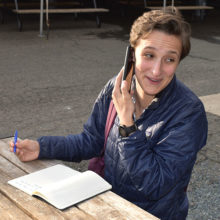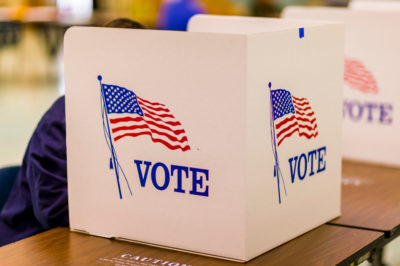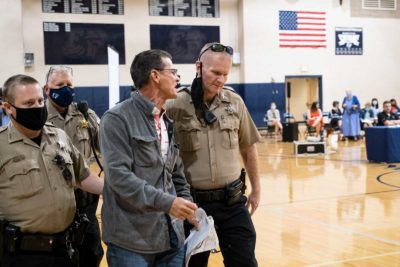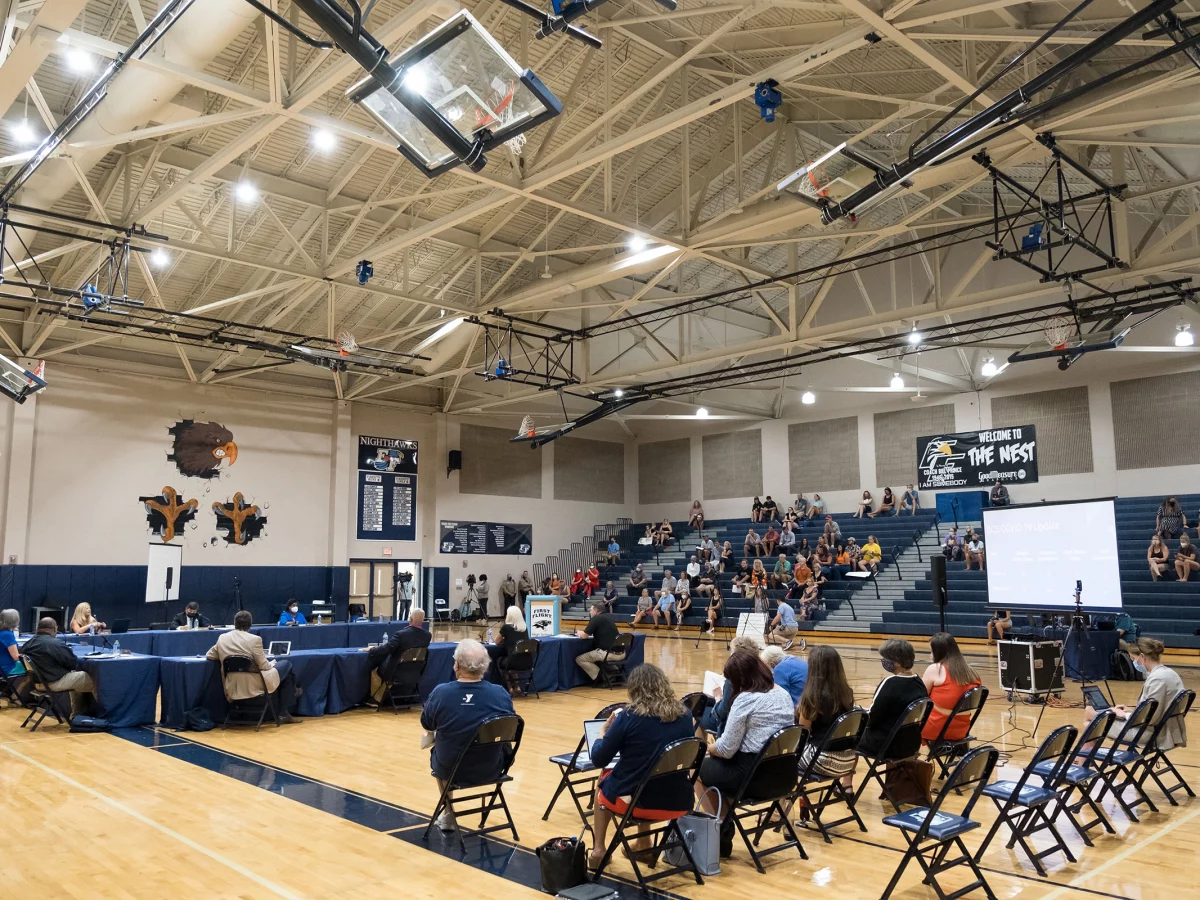

|
|
Editor’s note: This article was corrected after the election. All numbers, maps, and the table have been updated.
Over the past two years during COVID-19, school board meetings drew overflowing crowds and were often contentious as masking and other pandemic policies sparked reactions. Sometimes those in attendance needed to be reprimanded. Sometimes they needed to be removed (see the photo below).
Now more accessible than perhaps ever before and often held via livestream, communities all across the country have more avenues to help engage in their local political process. It’s clear many community members are engaging and school boards have been, of late, a focal point for local (and, often, national) politics, with the Economist even referring to them as “political cage-matches” and the issues expanding way beyond those related to the pandemic.
Voting in the 2022 midterms is underway, and this election could have lasting effects on North Carolina’s school districts, especially during this even-numbered election year when parents typically account for a larger share of the electorate.
For about 40% of North Carolina’s school districts, a majority of the school board is up for election this year. That means the balance of power could potentially shift in many areas of the state.
Keep reading to learn more about this year’s school board elections.
EdNC compiled and analyzed data on every school board in the state. Here’s what we found:
- There are 759 school board seats in North Carolina across 115 school districts.
- Approximately one-third of those seats are up for election on Nov. 8 — about 290 seats.
- In 47 school districts, a majority of the seats on the school board are up for election on Nov. 8. This means that the balance of power in these school districts could shift.
- School boards in North Carolina most commonly have 7 members, though it ranges from 5 members (42 districts) to 11 members (3 districts).
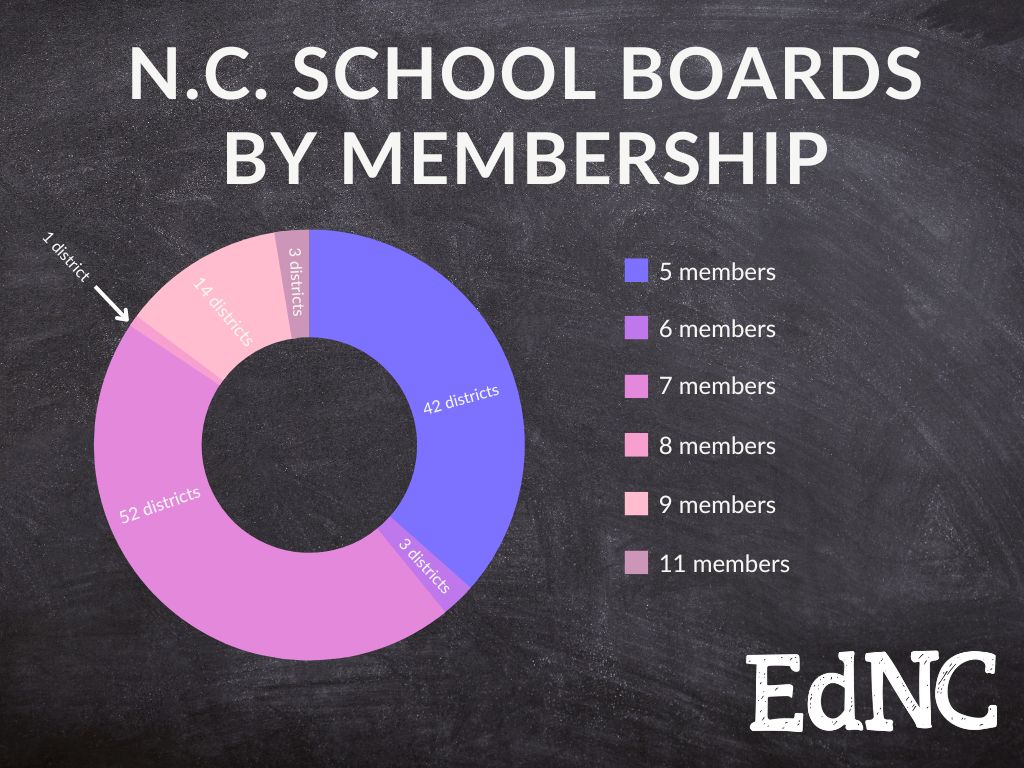

- In total on Nov. 8, 83 school districts have elections. This impacts approximately:
- 5,284 schools
- 79,575 teachers
- 1,075,824 students
- Of those 83 school districts that have elections on Nov. 8, 41 of those will be partisan — marking a significant change over the past decade. Prior to 2013, there were only 10 partisan school districts in the state. You can see whether your school board races are partisan in the table later in the article.
Take a look at the map below to see where the school board races are.
- For some school districts that have Nov. 8 elections, EdNC looked at their political lean, using data from the John Locke Foundation, a conservative think tank. Of those who have countywide seats up for election (i.e. some or all of their seats are at-large or represent the entire county):
- 29 were rated “Safe Republican”
- 4 were “Likely Republican”
- 6 were rated “Lean Republican”
- 3 were rated “Safe Democratic”
- 3 as “Likely Democratic”
- 2 as “Lean Democratic”
- Only one — New Hanover — was considered a “Toss Up.”
Use the map below to see the partisan lean for each of the countywide races. We will continue to update this story if additional data on school board races that aren’t countywide becomes available.
What do school boards do?
Despite the appearance in headlines — often in regard to national hot-button political issues — school boards have critical, practical duties in ensuring the equal opportunity of North Carolina students to their constitutional right to a free, public education.
The powers and duties of local school boards are defined by N.C. General Statute sec. 115C-47, and include most importantly the power to elect the superintendent.
According to the North Carolina School Boards Association (NCSBA), school boards in North Carolina have five primary responsibilities:
- Providing every child with the opportunity to receive a “sound basic education” during a minimum of 185 days or 1,025 hours of instruction covering at least nine calendar months.
- Setting educational policy within the limits of its authority and overseeing the implementation of its policies and the state’s educational program.
- Making decisions about the superintendent’s personnel recommendations.
- Managing the financial affairs of the district.
- Providing adequate school facilities.
As critical as these responsibilities are, they’re often not at the top of most voters’ lists. A combination of low turnout (the National School Boards Association estimates in the 5-to-10% range) and low information can make school board races “susceptible to the whims of a small number of voters,” according to Jon Valant, director of the Brown Center on Education Policy at Brookings.
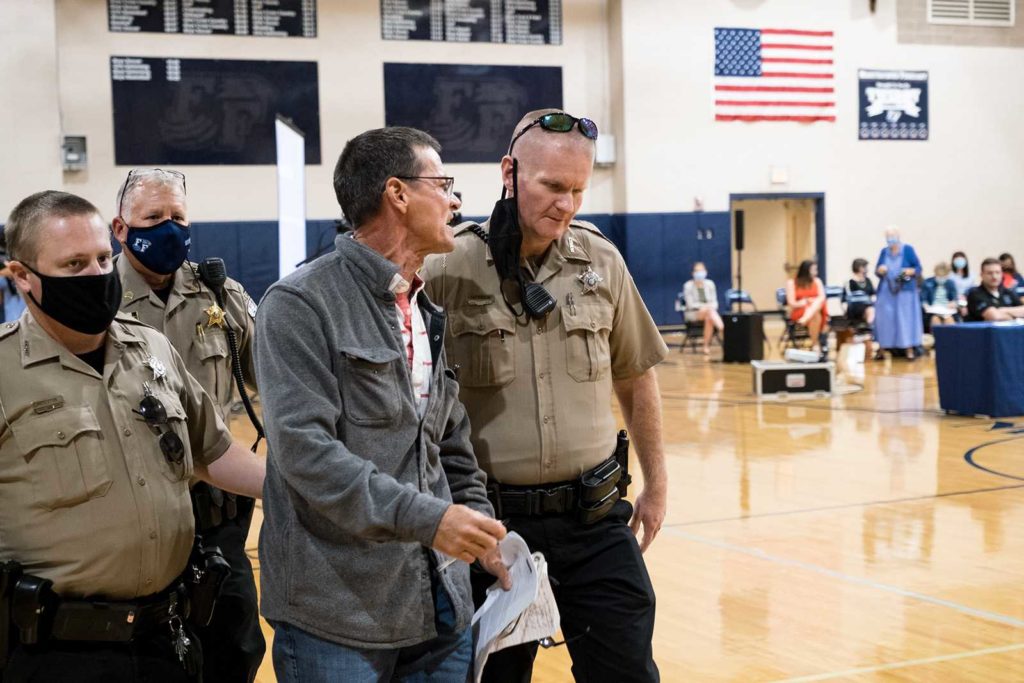

Those “whims” could have implications for student achievement: A report published by the Thomas B. Fordham Institute, a right-leaning think tank, found that “districts that are more successful academically have board members who assign high priority to improving student learning.”
The researchers concluded: “More than anything, what we take from this study is that school board members and their attitudes do matter — and therefore it’s important to take seriously who gets elected and how that is done.”
Do I have a school board election this year?
Eighty-three school districts across the state have upcoming elections.
If you’d like to find out more about your local elections, you can go to the North Carolina State Board of Elections website here and type in your information. Once you’ve selected yourself from the results, scroll down to the “Your Sample Ballot” section and view your ballot — school board elections in your district (if there are any) will appear on your ballot.
You can also go to your county’s Board of Elections website for more information. Here’s an example from Hoke County.
Early in-person voting began Oct. 20 and ends Nov. 5. Of course, you can always vote in-person on election day, Tuesday, Nov. 8, at your assigned polling place. You can learn more here.
Behind the Story
The data in this article were pulled over months leading up to the election from each district’s website. After the election, we were able to cross compare with data from the State Board of Elections, which changed several numbers related to the number of seats up for election. All data is accurate using unofficial election results as of Nov. 10.
